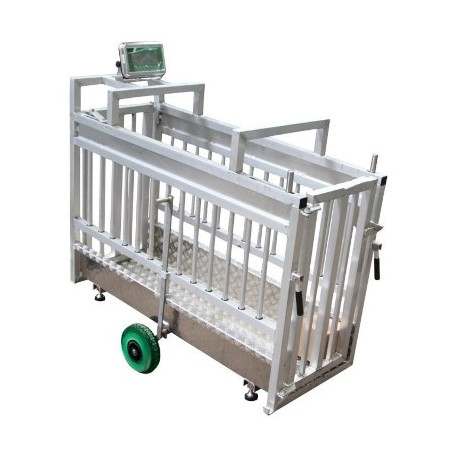The physical properties of the diet are important factors for determining animal performance. A reduction of the particle size may increase the surface area for enzyme digestion, which leads to positive effects on nutrient digestibility. However, these feed variations may increase production cost and decrease feed productivity. This study was conducted to evaluate the effects of feed processing and particle size on growth performance, nutrient digestibility, carcass characteristics, and gastric health in growing-finishing pigs, to collect more information about the optimal feed form in pig production. For that purpose, a total of 360 growing pigs (22.6±0.01 kg initial body weight [BW]) were allocated to 1 of 6 treatments with 6 replicates by BW and sex, and 10 pigs were housed in one pen in a randomized complete block design. The BW and feed intake were recorded to calculate growth performance. For the digestibility trial, a total of 24 barrows with an initial BW of 33.65±0.372 kg were split into 6 treatments with a completely randomized design. Dietary treatments were designed by a 2 x 3 factorial arrangement of treatments based on two main factors, particle size (600, 750, 900 μm) and feed form (mash and pellet) of diet. Experimental diets were formulated to contain the requirements of the NRC (2012).
As a result, the BW and average daily gain were not changed by dietary treatments, and the feed intake of finishing pigs (weeks 6 to 12) was increased when the pigs were fed a mash diet. For the overall period, the feed efficiency of pigs was improved with the pellet diet and reduced particle size. The pellet diet had effects on increasing crude fat digestibility relative to a mash diet, but there was no considerable change in dry matter and crude protein digestibilities by dietary treatments. In the evaluation of gastric health, a trend for an increased incidence of keratinization in the esophageal region was observed as particle size decreased.

Feed efficiency could be improved by a pellet diet and reduced particle size. Nutrient digestibility, carcass characteristics, and gastric health were not affected by feed form, and particle size ranged from 600 to 900 μm.
Jo YY, Choi MJ, Chung WL, Hong JS, Lim JS, Kim YY. Effects of feed form and particle size on growth performance, nutrient digestibility, carcass characteristics, and gastric health in growing-finishing pigs. Animal Bioscience. 2021; 34(6): 1061. https://doi.org/10.5713/ab.20.0777




